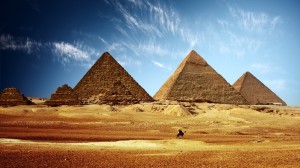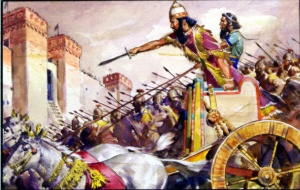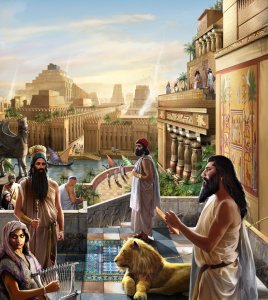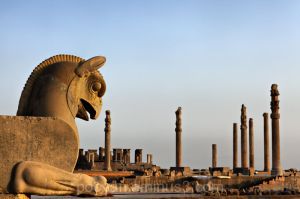To better understand the historical and political context of the Minor Prophets, knowing the geography of the area is key. The location of Israel was strategic in ancient times because it formed a bridge that connected the three continents of Asia, Africa and Europe. Since it was a crossroads of sorts, many nations and empires throughout history desired to control or have access to the land for trade and transportation purposes. In addition, as part of the Ancient Near East, Israel was close to the Fertile Crescent, which made it a valuable resource to those who wished to have access to the land. Furthermore, since a variety of cultures passed through Israel, the land was exposed to a variety of foreign cultural influences (not all of which were positive). Since Israel was exposed to so many different lands and nations that desired to control it, it was under constant threat of military invasion and conquest. This caused the Israelites to want a king to protect them, which could be why the period of King David’s reign was a very stable time in the history and land of Israel.

Before the time of the Minor Prophets, Egypt was the main superpower of the day. After the empire’s decline, King David and King Solomon ruled Israel in glory, making the nation the greatest power in the Ancient Near East. During their reigns, the magnificent Temple was built. However, after their reigns, Israel divided and fell from its peak, entering into a shifting period of weakness and strength while the nation of Assyria threatened and receded.

During the time of the early Minor Prophets was the last period of strength and wealth for Israel and Judah, a period where Israel was especially corrupt and evil. God sent several prophets to warn the nations of the consequences of their continued violation of the Mosaic Covenant (aka destruction and exile). The prophets’ warnings came true when a resurgent Assyria took the Fertile Crescent, including Israel, in 721 B.C.

Judah expanded under her godly king Josiah around the time of the middle of the Minor Prophets. Unfortunately, only corrupt kings followed his death. Meanwhile, the Assyrian empire was weakening, and the Babylonian empire expanding. It threatened Judah, eventually conquering it and destroying both Jerusalem and the Temple in 586 B.C.; tens of thousands of Jews were killed and/or exiled.

During the late Minor Prophets, King Cyrus of Persia conquered Babylon in 539 B.C. and allowed 50,000 Jews to return home a year later, where they joined the 200,000 still living there and attempted to reconstruct the Temple (which was later completed in 516 B.C.) This was a period of delays, poverty and persecution while the remaining prophets encouraged the people. The rest of the period of the Minor Prophets was spent in a century of big problems and little glory.